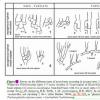
08-01-2026 21:22
 Blasco Rafael
Blasco Rafael
Hola, He recogido esta muestra de Orbilia sobre Re

07-01-2026 10:24
 Danny Newman
Danny Newman
Pezicula sp. on indet. hardwood Appalachian Highl

07-01-2026 22:22
 Danny Newman
Danny Newman
Tatraea sp. on indet. hardwood The Swag, Great Sm

07-01-2026 17:29
 Marc Detollenaere
Marc Detollenaere
Dear Forum,On a barkless Populus I found some smal

10-11-2021 17:33
 Riet van Oosten
Riet van Oosten
Add-on topic http://www.ascofrance.com/forum/7059

07-01-2026 10:05
 Danny Newman
Danny Newman
cf. Chaetospermum on XylariaCosby Campground, Grea

02-01-2026 17:43
MARICEL PATINOHi there, although I couldn't see the fruitbody, I

04-01-2026 17:45
 Stephen Martin Mifsud
Stephen Martin Mifsud
I was happy to find these orange asmocyetes which
Aide sur Hyaloscyphaceae
Nicolas VAN VOOREN,
30-09-2012 11:25
 Bonjour.
Bonjour.Trouvé sur branche mort de Salix, ce minuscule Hyaloscyphaceae de forme urcéolée.
Apothécies grisâtres, à marge couverte de petits poils blancs.
Excipulum composé de cellules à paroi réfringente. Poils externes grisâtres. Poils marginaux courts, 22-28 x 3.5-5 µm, hyalins, à sommet obtus.
Asques avec crochet, 68-75 x 6-8 µm, anneau apical IKI + (bb)
Paraphyses sans vacuole.
Spores 8-11 (12) x 2.5-3 (3.2) µm, contenant quelques guttules (OCI=1)
J'ai cherché du côté des genres Olla, Unguiculella, etc. sans succès. Une idée ?
Hans-Otto Baral,
30-09-2012 12:05

Re : Aide sur Hyaloscyphaceae
I only imagine Protounguicularia barbata (Olla transiens), but the typical hairs are missing. Are ther really true croziers?
Zotto
Zotto
Nicolas VAN VOOREN,
30-09-2012 13:46

Re : Aide sur Hyaloscyphaceae
Thank you Zotto.
I just made a new preparation in KOH 5%. I saw some marginal hairs with refractive tip.
I confirm that asci have crozier at their base.
I just made a new preparation in KOH 5%. I saw some marginal hairs with refractive tip.
I confirm that asci have crozier at their base.
Hans-Otto Baral,
30-09-2012 16:06

Re : Aide sur Hyaloscyphaceae
And you do not only ?mean protuberances? because P. barbata has simple septa though crozier-like protuberances. Is the crozier on one of your photos?
Alessio Pierotti,
30-09-2012 20:49

Re : Aide sur Hyaloscyphaceae
Nicolas this is the study of the genus Protounguicularia by Huhtinen (1987)
Björn Wergen,
01-10-2012 12:21

Re : Aide sur Hyaloscyphaceae
Hi Pierotti,
thanks for the doc. Do you have more pdfs of the "Beiträge zur Kenntnis der Pilze Mitteleuropas"? I would be interested in it (especially Ascomycetes).
regards,
björn
thanks for the doc. Do you have more pdfs of the "Beiträge zur Kenntnis der Pilze Mitteleuropas"? I would be interested in it (especially Ascomycetes).
regards,
björn
Nicolas VAN VOOREN,
01-10-2012 18:19

Re : Aide sur Hyaloscyphaceae
About the "crozier", this is much like what you call protuberance (as drawn by Huhtinen, 1987, fig. 1B). I used the term crozier because I thought it could be associated with the "type pleurorynque à crochet libre" as represented by Berthet in his thesis (1964, p. 99, fig. 2).
Hans-Otto Baral,
02-10-2012 08:59


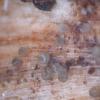
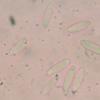
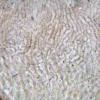
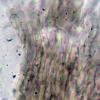
 HUHTINEN_1987
HUHTINEN_1987